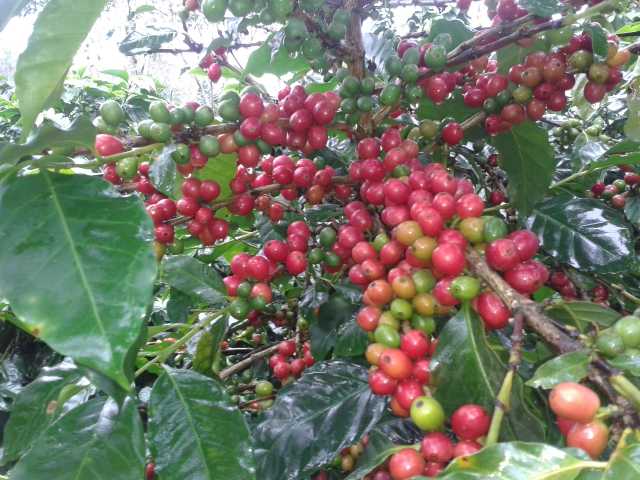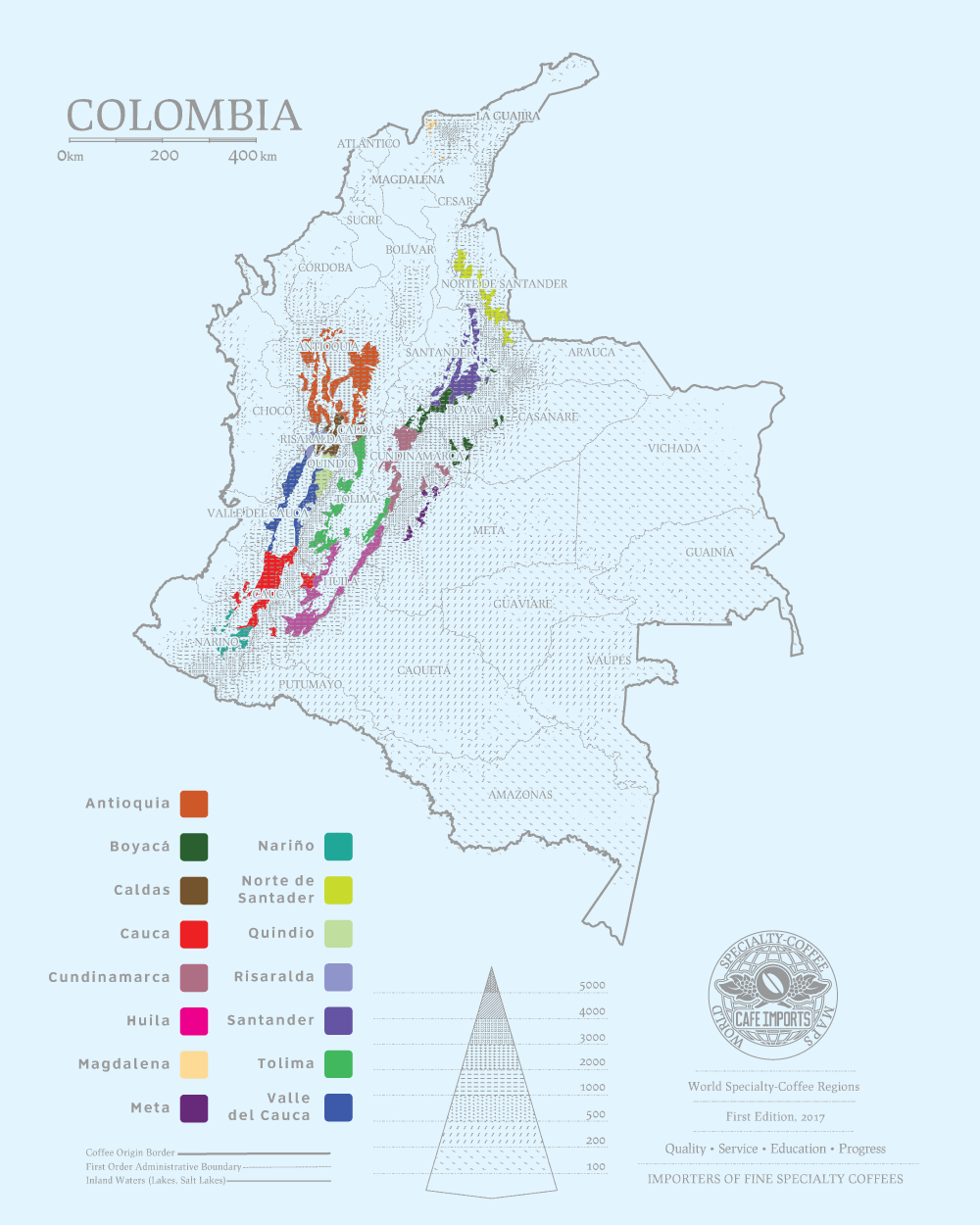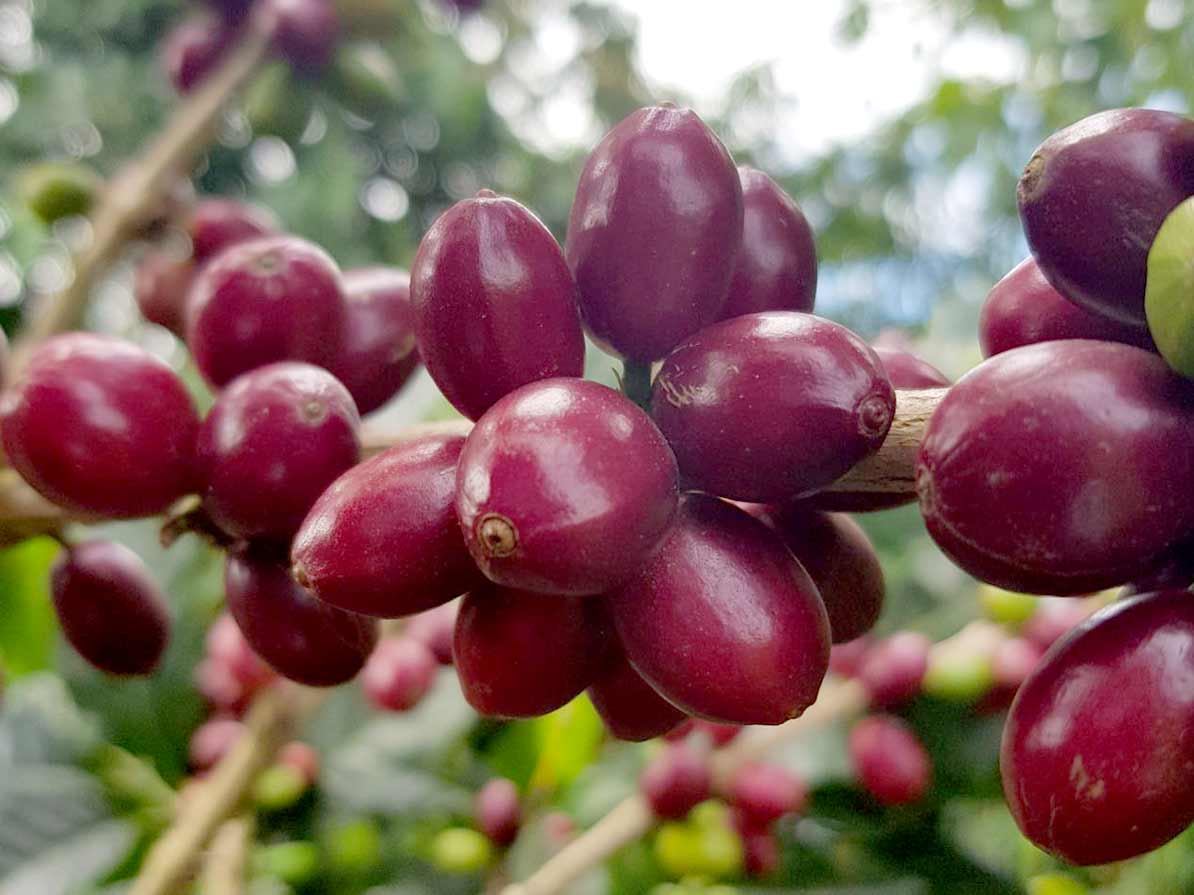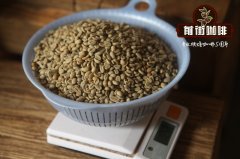Kaddura Coffee Bean Variety introduction _ Kaddura Coffee taste _ Kaddura Coffee Bean Price

Will specially find the Kaddura coffee variety article to read the small partner, Qianjie believes that you should also have a general understanding of coffee bean varieties. The coffee varieties that most coffee consumers have access to are medium-grain coffee (Robusta is a mutant of medium-grain coffee) and Arabica, which we often mention. Among them, the two oldest varieties of Arabica are Iron pickup and Bourbon. The bourbon system has derived a great advantage of the coffee variety, which is the Kaddura variety that Qianjie will introduce in this article.
History
It is also mentioned in front of Qianjie that Kaddura is a variant of the bourbon system, and how did bourbon come from? In the early days, Ethiopian iron pickups were transplanted to Yemen and mutated without the intervention of modern science, and the shape of coffee beans changed from thin to round. In 1715, France, under the Bourbon dynasty, transplanted round beans from the Yemeni mocha to the island of Bourbon on the east coast of Africa (renamed Reunion after the French Revolution). Later, the bourbon species was introduced by Brazil from the island of Bourbon in 1860 to replace the lower-yielding iron pickup. This is the first time that bourbon has entered Central and South America and spread all over Central and South America.
According to Qianjie, coffee growers inadvertently discovered the Kaddura variety on a plantation in the Brazilian state of Minas Gerais between 1915 and 1918. It was later found that there was a mutation in a group of genes in bourbon in the plantation, causing the coffee plant to become smaller. The local people use Guarani to name this new breed "Caturra" for its special short biological form, which means "small". It is sometimes called "Nanico".
Since 1937, the Agricultural College of the State of Sao Paulo (IAC) in Campinas, Brazil, has screened Kaddura and made group selection. What's interesting about Qianjie is that the Kaddura variety has never been released in Brazil, but it has spread all over Central America.
Kaddura was introduced to Guatemala in the 1940s. It was later introduced from Guatemala to Costa Rica, Honduras and Panama. Today, Kaddura is one of the most important economic coffee in Central America. Until 2008, when Colombian farmers were encouraged to plant Castillo, which is resistant to leaf rust, Kaddura was thought to account for almost half of the country's production.
Kaddura variety characteristics
The Kaddura variety has a petite plant, so Kaddura can be planted more densely. In addition, Kaddura's secondary branches are very close apart, which enables it to produce more fruit in the same space, and the unit yield can be greatly increased. It is precisely because the plant size of the Kaddura variety is petite and more convenient to harvest.

Kaddura is also known as "tanned coffee" because Kaddura does not need shade and is still alive even in the sun. Looking through the data on Qianjie, it is found that Kaddura is suitable for planting in areas between 700m and 1700 m, and it has a strong ability to adapt to the environment. The higher the altitude, the better the flavor, but the production capacity is relatively reduced. Kaddura, like bourbon, has a cyclical problem of production capacity fluctuations every two years.
The smell of Kaddura
As mentioned earlier in Qianjie, Kaddura is widely grown in Central and South America, so Kaddura can be found in coffee beans in many countries.
On the bean lists on the front street, such as Flower Butterfly in Panama, Diamond Hill in Emerald Manor, Kaddura in Colombia, Rose Valley, passion Fruit, Baja, Monster Manor and Stonehenge Manor Blueberry in Costa Rica, Shirley and Litchi Orchid in Honduras, the flower god of Guatemala, and the labels affixed to the packaging on the front street all have the words "Kaddura".
So, Qianjie Coffee with Colombian passion fruit yeast anaerobic washing Kaddura to introduce to you!

Qianjie Coffee Colombian passion ferment washing Purple Kaddura
Producing area: Colombian Cymbidium producing area
Manor: Montblanc Manor
Altitude: 1900m
Variety: purple Kaddura
Treatment method: passionfruit enzyme anaerobic washing treatment
[Huilan producing area]
In front of the street, this passion ferment wash purple Kaddura comes from the cymbidium producing area of Colombia. In recent years, the Coffee Council of Huilan Province has had close exchanges with the Colombian National Federation of Coffee growers to strengthen the planting level and treatment technology of Coffee growers of Coffee Coffee, especially the development of anaerobic treatment technology in recent years. Colombian coffee is also moving in a new direction.

[Montblanc Manor]
The passion fruit estate on Qianjie is Montblanc Manor on the winding mountain road of Veredalatocola in Pitalito, a coffee estate run by the owner Rodrigo Sanchez Valencia, whose coffee cultivation dates back to his grandfather. Montblanc Manor is located on the top of the hill, with a land area of about 18 hectares, with complete treatment equipment such as wet grinders and dryers.

[Zikadura]
Zikadura belongs to a variety of Kaddura, derived from the low-probability natural variety of Red Kadura. The tip of the Zikadura plant grows copper-purple young leaves, and the fruit is dark purple when it is ripe. Montblanc Manor selected 26 plants with the characteristics of Zikadura from more than 20,000 coffee plants in its manor that year. Leaf rust swept through Colombia in 2012, but Zikadura has survived. Zikadura has a unique flavor and strong resistance to leaf rust. In addition, this variety also has a high Baili sugar content.

[passion fruit enzyme anaerobic washing treatment]
Montblanc Manor measures the Bailey sugar content of coffee cherries after harvesting and specifies the appropriate treatment method according to the sugar content. Coffee with a Bailey sugar content of 24-27 degrees is used as a washing treatment. First, the peel and pulp of the coffee fruit are removed, and then the coffee fruit and passion fruit are fermented. The high sugar content provides an excellent environment for the growth of bacteria to cultivate the bacteria and seal them with shell beans in a barrel for anaerobic fermentation. The fermentation time is controlled between 28 and 32 hours, then washed with clean water, transferred to a solar dryer for a few days, and finally moved to a cool viaduct bed to complete the drying process.

Suggestion on brewing coffee in Qianjie
Filter cup: V600001
Water temperature: 90-91 ℃
Powder content: 15g
Powder / water ratio: 1:15
Degree of grinding: EK43s#10 (the pass rate of Chinese standard No. 20 screen is 80%)

Cooking technique: three-stage extraction. Steam with 30 grams of water for 30 seconds, small water flow around the circle to 125 grams for sectional injection, water level drop is about to expose the powder bed, continue to inject water to 225 grams to stop injection, and so on when the water level drop is about to expose the powder bed, remove the filter cup, (steaming starts timing) the extraction time is 2 minutes 39 percent 00 ".
Flavor description: after grinding into powder, there is the aroma of raisins and white flowers can be smelled when cooking. On the palate, you can feel the obvious passion fruit aromas, grape-like acidity and a honey-like finish.
For more information about coffee beans, please follow the coffee workshop (Wechat official account cafe_style)
For professional coffee knowledge exchange, please add Wechat account kaixinguoguo0925.
Important Notice :
前街咖啡 FrontStreet Coffee has moved to new addredd:
FrontStreet Coffee Address: 315,Donghua East Road,GuangZhou
Tel:020 38364473
- Prev

Colombia Kaddura Coffee Bean roasting _ Kaddura Coffee Bean Brand recommendation _ is Kaddura good?
Professional coffee knowledge exchange more coffee bean information Please pay attention to coffee workshop (Wechat official account cafe_style) roasting is the source of coffee flavor, will be roasted raw beans to be called roasting, raw beans can not drink without roasting, roasted coffee beans, has determined 80% of the coffee taste, the roasting process is very tricky, the fire is too strong, the outer ripeness is endogenous, the fire is too weak, the inner ripeness is overripe.
- Next

Kadulla Coffee Brewing Method Teaching_Kadulla Coffee English Name caturra_Kadulla Coffee Push
Professional coffee knowledge exchange More coffee bean information Please pay attention to Coffee Workshop (Weixin Official Accounts cafe_style)[Cadura Coffee Bean] Cadura is a single-gene variant of Bourbon Bourbon. It was discovered in Brazil in 1937. Its production capacity and disease resistance are better than Bourbon, and the tree plant is shorter, which is convenient for harvesting. Unfortunately, like Bourbon, it has a cycle of fluctuation of production capacity every two years.
Related
- Beginners will see the "Coffee pull flower" guide!
- What is the difference between ice blog purified milk and ordinary milk coffee?
- Why is the Philippines the largest producer of crops in Liberia?
- For coffee extraction, should the fine powder be retained?
- How does extracted espresso fill pressed powder? How much strength does it take to press the powder?
- How to make jasmine cold extract coffee? Is the jasmine + latte good?
- Will this little toy really make the coffee taste better? How does Lily Drip affect coffee extraction?
- Will the action of slapping the filter cup also affect coffee extraction?
- What's the difference between powder-to-water ratio and powder-to-liquid ratio?
- What is the Ethiopian local species? What does it have to do with Heirloom native species?

